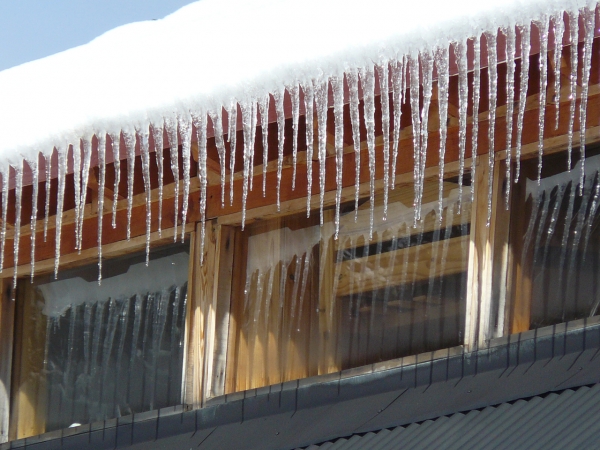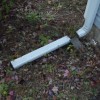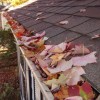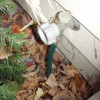Winterizing Your Home
We have all performed the recommended winter car maintenance to ensure proper operation and have put our summer clothes away for the year. But have we readied our home for the winter as well? Preparing your home for cold winter weather not only contributes to your general comfort, but it can also contribute to keeping money in your pocket.

As energy costs continue to rise, ensuring the proper operation of your heating equipment, adding insulation, and sealing gaps where air leaks occur can save you money on your winter heating bills.
As with any type of maintenance, winterizing your home commonly begins with a visual inspection and a determination of your need to improve or repair. In some cases it is as simple as completing a few minor tasks prior to temperatures falling. In any case, it is vital to the longevity of your home's materials and/or systems.
Below is our top to bottom winterizing guide for the both the outside and inside of your home. We'd like to hear from you. What do you do each year to winterize your home? Is there anything you think should be included in addition to what is listed below?
Outside
-
Chimney
- Your chimney should be professionally inspected and, if necessary, cleaned every two to three years.
- Inspect chimney cap and screen located at the top of the chimney to ensure there is no damage where rain, snow, birds, or pests could enter. If damage is found, it should be properly repaired using durable materials.
- Inspect masonry chimneys for loose or cracked mortar. If necessary, mortar joints can be sealed with a masonry sealant as a short term solution, or the mortar joints can be re-pointed, which would be a more permanent, long term solution.
-
Roof
- Inspect roofing material with binoculars, or, if comfortable and with proper safety precautions taken into consideration, on the roof itself. If necessary, replace worn roofing material.
- Inspect attic vent openings for nests and/or debris causing blockage.
-
Gutters and Downspouts
- Remove leaves and all other debris from gutters.
- Run water through gutters and downspouts to inspect for leaks. If necessary, seal gutter parts and connections that are leaking. Also, replace any downspouts that have leaks at the rear seam.
- Inspect gutters and downspouts to ensure they are properly attached. If necessary, properly secure them.
- Ensure that downspout extensions are away from the foundation a proper distance of 6’-0” to 10’-0”.
-
Walls
- Inspect wall cladding for missing material and/or damage. If necessary, replace.
- Inspect penetrations for gaps. If necessary, seal with a weather resistant caulk.
- Inspect flashings for damage such as lifting and poor seals, among others. Repair as necessary.
- Inspect landscaping. If necessary, trim away limbs and/or shrubs from the exterior walls.
-
Windows and Doors
- Remove screens and replace with storm windows, if applicable.
- Inspect trim and exterior window frames for any gaps. If necessary, seal with a weather resistant caulk.
-
Hose Bibbs
- Shut off water supply to hose bibbs from the inside.
- Disconnect garden hoses and insulate hose bibbs from the exterior if the water supply can not be shut off.
-
Air Conditioner
- Remove leaves and other debris on and around the air conditioner, then cover.
- Remove window air conditioners, if applicable.
-
Sprinkler Systems
- Professionally drain with a high pressure air compressor.
- Shut off water supply to sprinkler system and leave taps open slightly.
Inside
-
Attic
- Inspect attic insulation for depth. If you can see the top of the ceiling joists you should consider adding additional blown or un-faced batt insulation. Ideally, a minimum rating of R-30 should be achieved.
- Insulate attic access.
-
Ceiling Fans
- Reverse rotation of fan to clockwise.
- Change speed to low.
-
Smoke and Carbon Monoxide Detectors
- Replace batteries and test operation.
- If not already installed, a carbon monoxide detector should be installed near the furnace and water heater.
-
Walls
- Inspect for air leakage on the inside of the home. A candle or incense stick can be used to help locate the air leaks. Flame or smoke will be noticeably directed away from the location where air leaks are occurring. If necessary, insulate or seal air leaks around doors, windows, outlets, and other penetrations where air leaks are occurring.
-
Windows
- Depending on the type, age, and how well your windows insulate, you can insulate your windows with an insulator kit that includes plastic sheeting and double sided tape.
-
Doors
- Inspect the condition of weather stripping around exterior doors. If not present or worn, replace weather stripping.
- Install door sweeps at the bottom of exterior doors, if not currently installed.
-
Fireplace
- Inspect damper to ensure proper operation.
- Inspect interior fire brick and mortar. If necessary, seal masonry cracks and/or re-point damaged mortar.
- Close damper when fireplace is not in use and open prior to use.
-
Furnace
- Have professionally inspected, cleaned, and tuned-up.
- In cold weather locations, a whole house humidifier that is attached to the furnace should be turned on and adjusted to a relative humidity between 30% and 50%.
-
Ducts and Registers
- Inspect ductwork for gaps. If necessary, seal with a metal-backed tape.
- Clean registers.
- Ductwork should be professionally cleaned every few years.
-
Crawlspace
- Inspect crawlspace for water. If water is located in the crawlspace, inspect grade and downspouts and make any necessary adjustments.
- Inspect the crawlspace insulation; if wet, replace. If not insulated, consider adding un-faced fiberglass insulation.
- Verify that a vapor barrier is installed along the floor surface of the crawlspace.
- Insulate crawlspace access.

Jeff Calcamuggio
Jeff is an Editor-at-Large for Buildipedia.com who writes and edits Featured At Home and Knowledgebase content. Prior to joining Buildipedia, Jeff's work experience included carpentry, construction documentation, specification writing, construction administration, project management, and real estate property inspection. Jeff is a member of the Construction Specifications Institute (CSI) and an educator at Columbus State Community College and enjoys challenging DIY home improvement projects.






